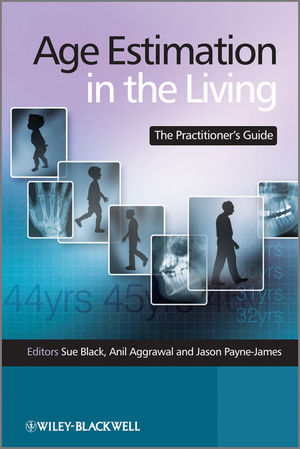Age Estimation in the Living: The Practitioner's GuideISBN: 978-0-470-51967-7
Hardcover
318 pages
October 2010
 |
||||||
Connect with Wiley Publicity
It is argued that immigration and human trafficking have raised the importance of age estimation techniques in recent years, why is this?
A significant number of people around the world do not have any legal document to prove when or indeed where they were born. As the human population has become more mobile, so this causes a problem for countries that expect proof of such identifiers. In some instances the movement of people is to avoid war or hardships and in some cases it is through illegal trafficking where concealment of the truth may occur.
How do you regard the standard of age estimation techniques currently used in the British legal system?
The standards are good but they are not precise. We ideally would all want a cookbook situation where the presence or the absence of a feature indicates a specific age – but that is unachievable and unrealistic. As a result, we have to ensure that we place a range of age possibilities that carries a high certainty that the individual will be placed within that range. This is quite different to assigning a specific age that will satisfy a legal definitive age. Are healthcare practitioners typically experienced with these techniques when called as expert witnesses? Whilst some clinical practitioners do have some expertise within this field, the willingness to provide forensic testimony may not be strong and the understanding of the importance of the limitations of the approach may not always be at the level of admissibility.
Do you support proposals to increase the age of criminality in the UK from 10 to 12?
This is a very difficult question and, not having a legal background, I am not sure that I am qualified to answer that one. Would the two year difference have any impact on age estimation practitioners? Yes it would have a difference as by 12 years of age a significant number of girls in particular will have embarked on pubertal changes. These changes cause considerable variation in the age assessment and so although it will raise different questions for the practitioner, it will not necessarily be any easier or more difficult – just different.
Your work as a Forensic Anthropologist took you to Kosovo in 1999 how was the experience of working with an international war crimes tribunal different from working within a national legal system?
This was a very different and challenging experience on so many fronts. Firstly was the fact that you were working to international law and with international teams. The rules of evidence gathering and the importance of the chain of evidence were not different but the scale of operations was huge. The conditions were hard and the security was always a concern and working solidly in these conditions for 6 weeks at a time was tiring but at all times attention to detail could never waver.
Your other international projects have included work in Sierra Leone, Iraq and Thailand, how do the standards of age estimation techniques and practitioners understanding vary internationally?
There is no doubt that each country has its own views on methodologies, their application and their relevance. However the world of forensic anthropology is pleasingly homogeneous and therefore although there is room for individuality, the standards are largely international. It is important to always work to the highest possible standard that the situation permits.
You founded the British Association for Human Identification, how has the association brought professionals from across the discipline together?
The aim of BAHID, post Kosovo, was to bring together practitioners from a variety of disciplines into a very informal atmosphere where discussion, debate and new research may be sparked. It has been operational now for nearly 8 years and we have a very loyal member set. It has proved to be an exceptionally valuable networking capability and our second textbook is underway.
The ‘CSI effect’ is credited with making not only forensic science, but science in general, ‘cool’. Do you think this has had a positive impact attracting students to forensic anthropology?
Unfortunately whilst it may have what is viewed as a positive impact it also engenders unrealistic expectations. Many students are seduced by the popularity of this type of media and are therefore largely unprepared for a highly demanding scientific programme where there is no guarantee of work being available as a career. The other downside is that juries now believe they are more forensically aware than they have ever been in the past and that also engenders unrealistic expectations.
What advice would you give to students about to embark on a career in forensic anthropology?
Students must be very realistic about the likelihood of embarking on a career in this subject. It is a fascinating subject but the majority will not end up in this field of work. It is difficult to get into and the student needs not only to have ability, but commitment and luck. Perseverance is unfortunately the name of the game because there is just no easy way and neither should there be because this discipline seeks to train niche expert witnesses for UK and International courts.



